Southwest Michigan field crops update – August 15, 2024
Review of the week.

Weather
This week saw mostly cool and dry weather. The temperatures favored disease development, although the lower relative humidity and infrequent precipitation did not. These temperatures are expected to continue for the next week or two before returning to warmer than normal. There will be several chances of precipitation developing from west to east over the next three days in the form of mostly showers (some thunderstorms). This will return us to cooler temperatures and drier than normal before the next probability for precipitation arrives late next week.

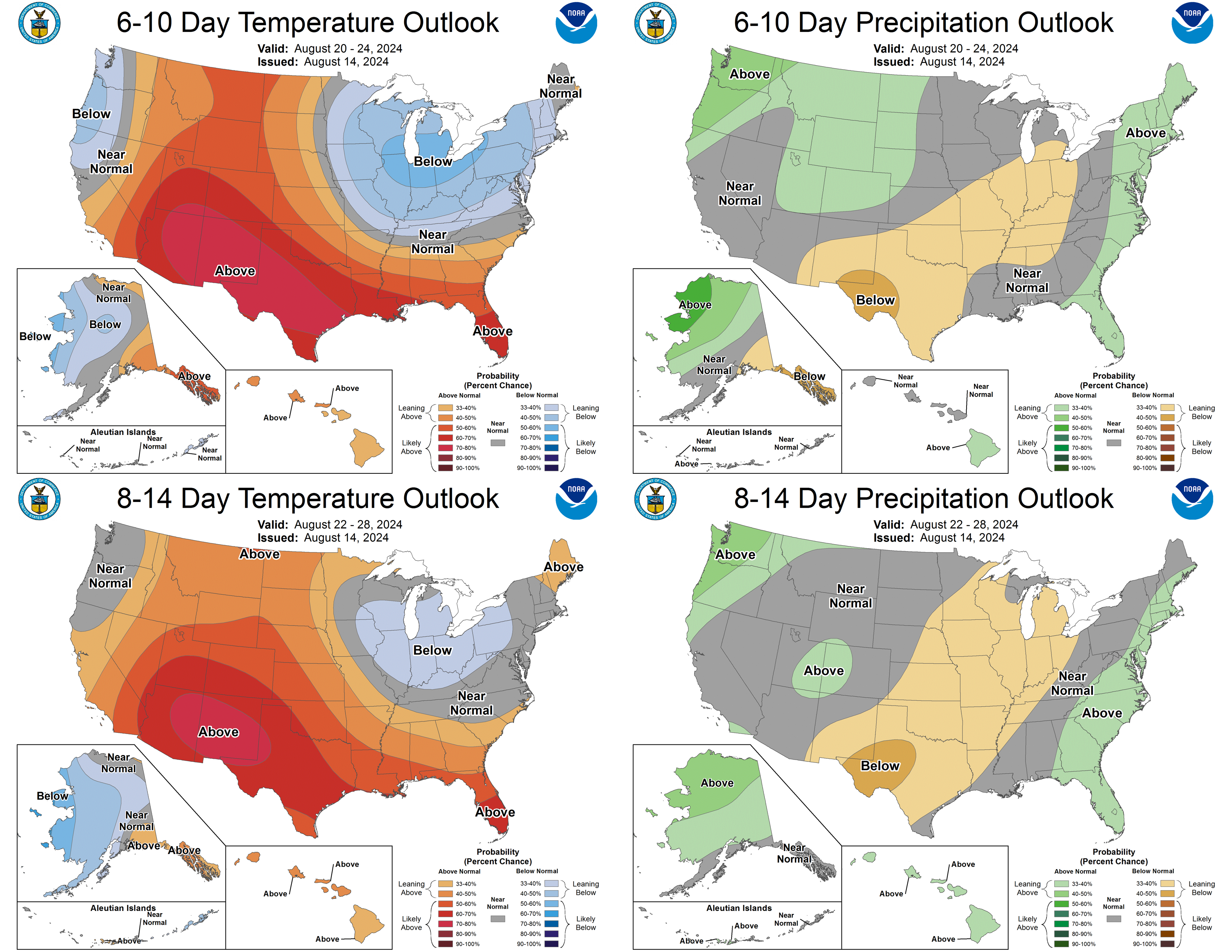
Crops and pests
Most soybeans are still at R5 as seeds continue to fill. This is a time of high water use for the plants, and water stress can reduce yields or affect seed fill. Read more about it in the Michigan State University Extension article “Irrigation during peak crop water use”. Some soybeans have reached R6, meaning the seeds are green but fill the pod cavity. The next stage, R7, is marked by one pod on the plant reaching mature pod color.
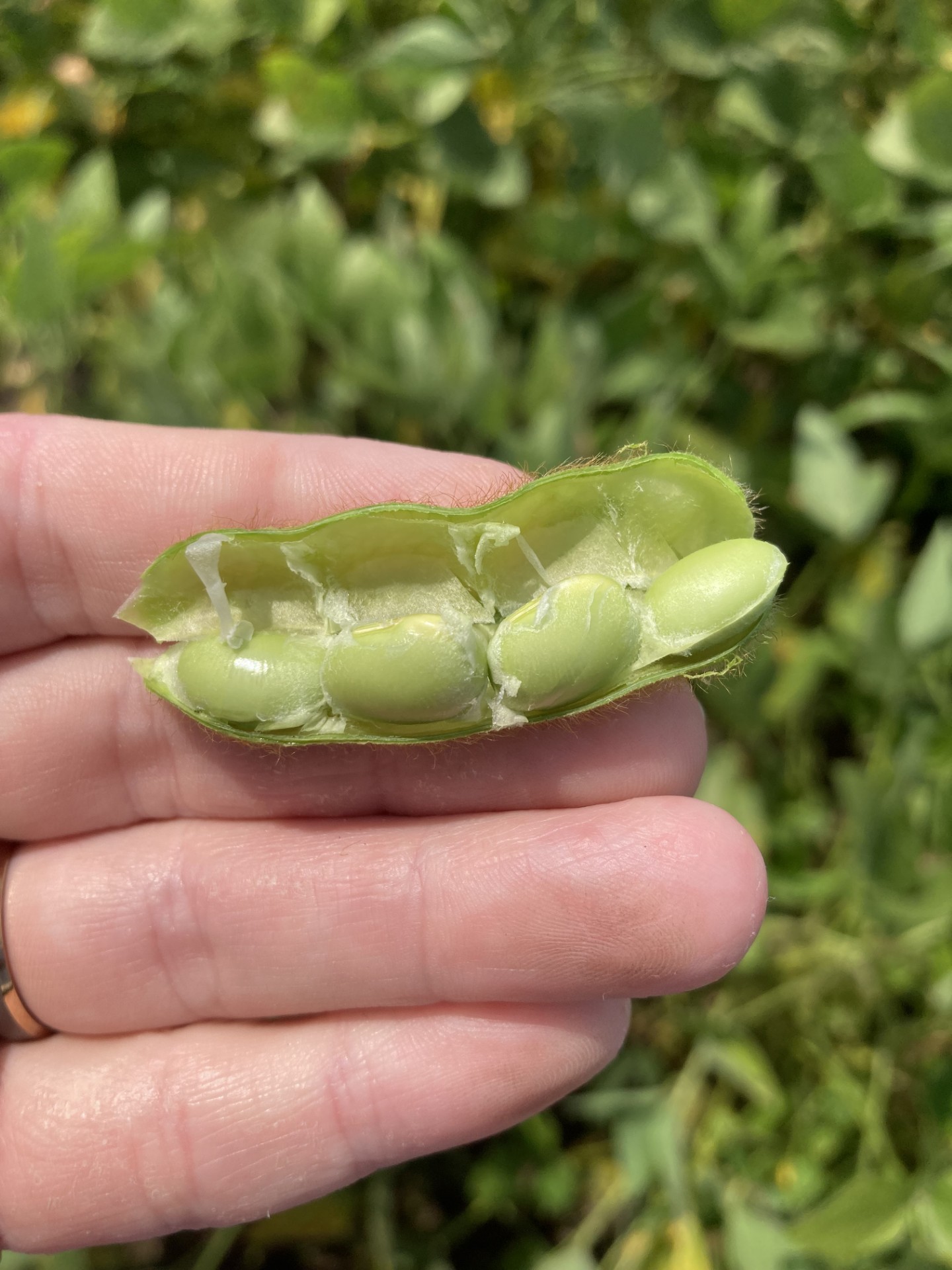
White mold has made an appearance in some fields. The distinctive white fuzz and hard black sclerotia can be found by checking underneath the canopy, especially in dense stands or areas where water may have pooled. Although this is peak water use for soybeans, it is a delicate balance for irrigators to provide sufficient water for seed fill without worsening white mold symptoms in the canopy.
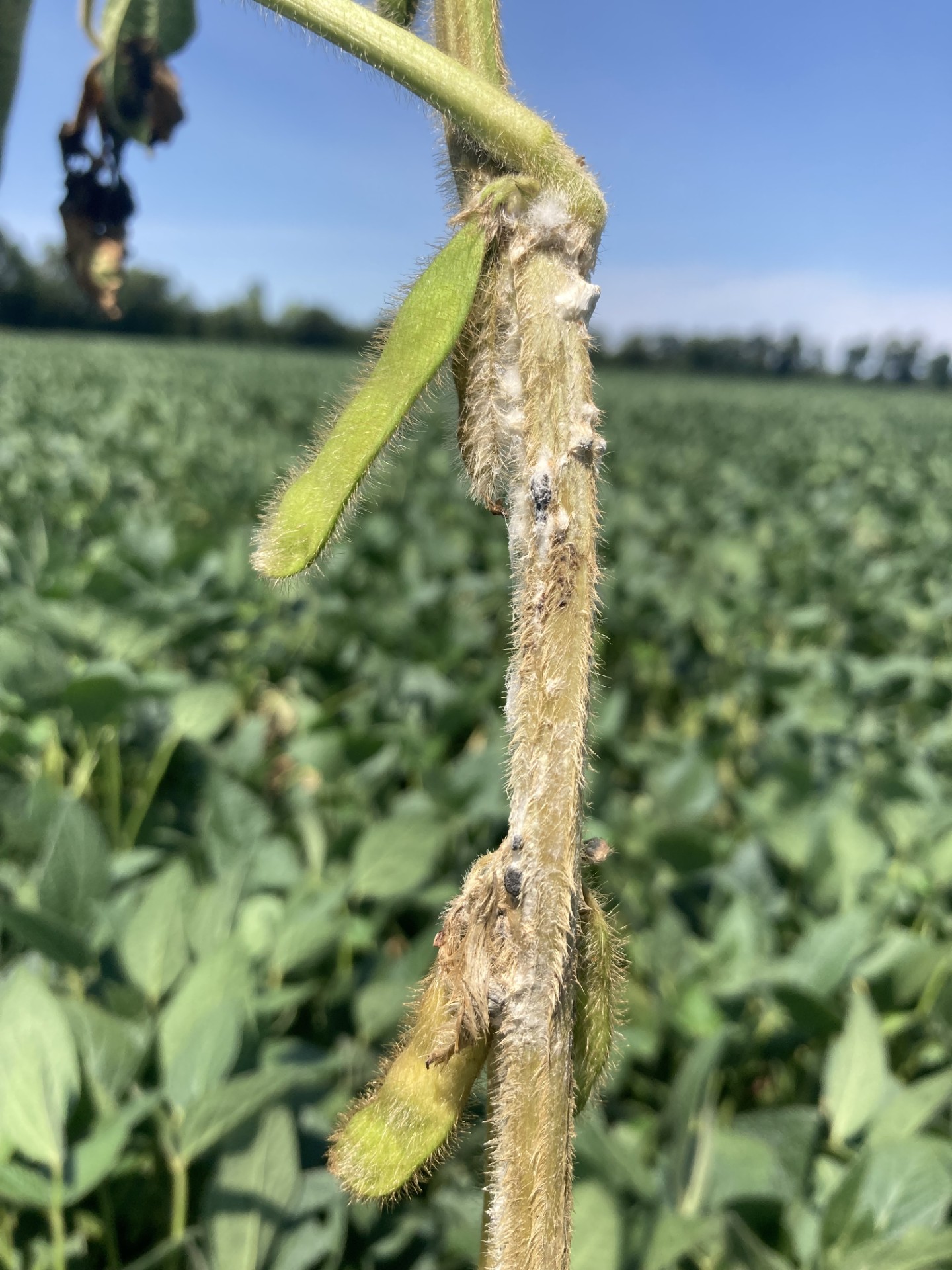
A variety of stink bugs are also present in soybeans with some pod feeding occurring. Although some seed damage may occur from feeding, they generally do not cause damage at an economic level, and natural predators help keep the population in check.
The spined soldier bug is a predatory stink bug that feeds on stink bug pests. When assessing stink bug damage, do not include spined soldier bug in counts. Stink bugs are identifiable by their shield shaped bodies and barrel-shaped eggs.

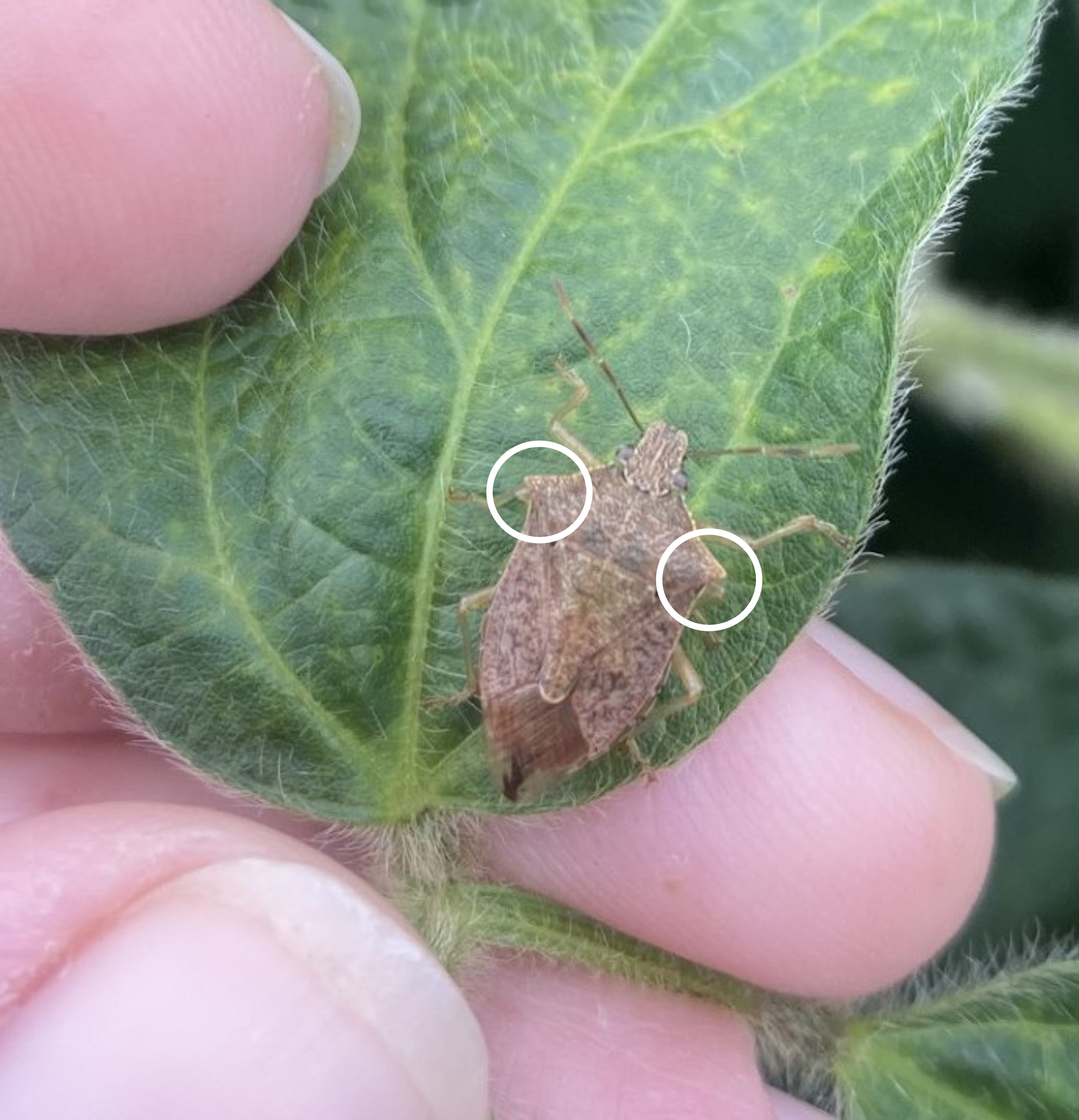
Corn is mostly at R3 (milk) and R4 (dough), with some acres at R5 (dent). At R5, grain fill is complete, and the kernel begins to dry down toward the cob. The milk line is visible and shows the progress of starch accumulation.
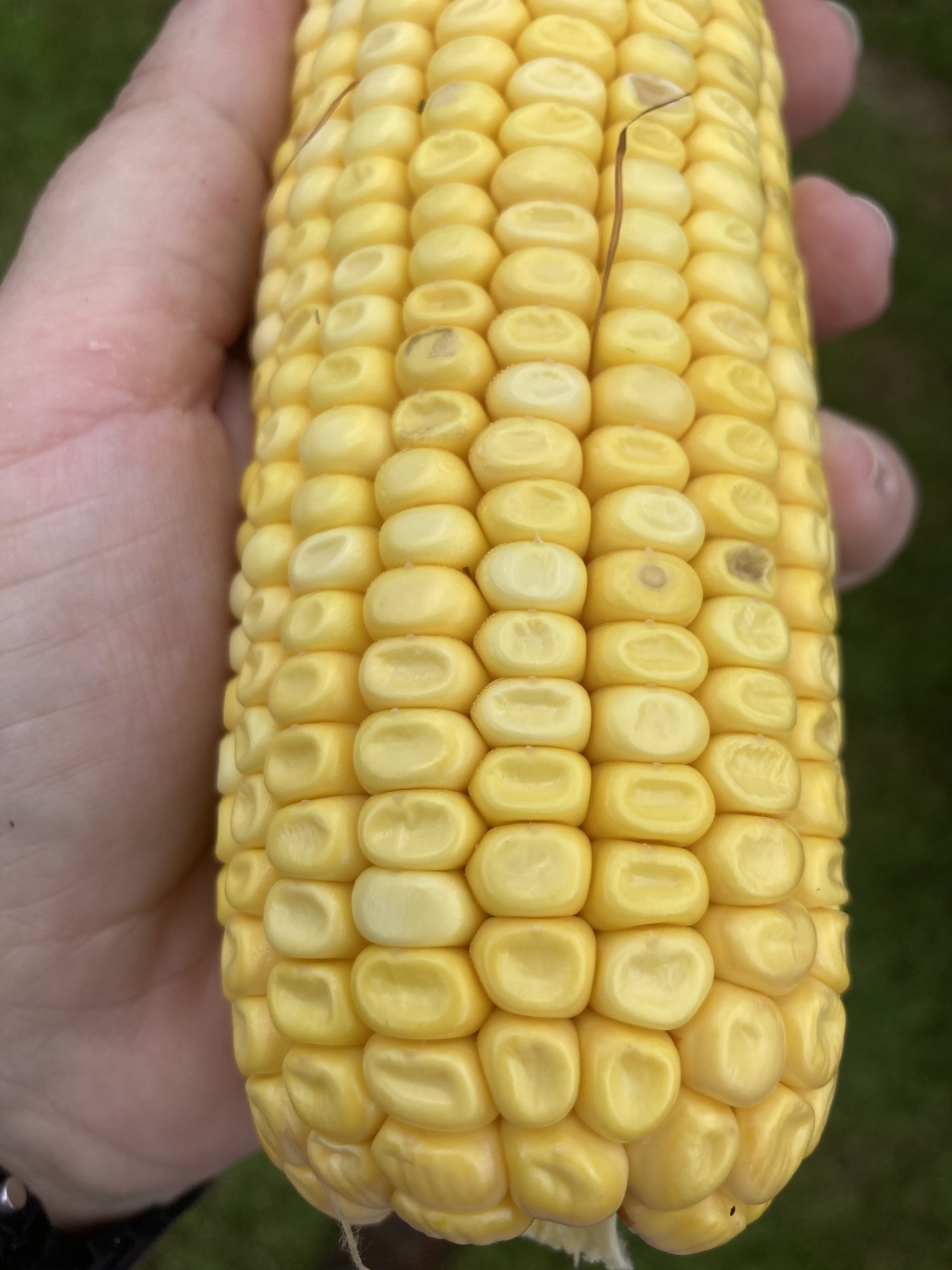
Tar spot has not been reported in any new counties in southwest Michigan. It is important to scout fields to understand the specific pressure in each location. To properly scout, walk through the corn and pay especially close attention to the ear leaf. It is important to physically walk through the field since once tar spot is visible from a vehicle, it is at a much higher pressure and can be difficult or less effective to treat. For example, the leaves pictured below show the weekly progression of tar spot in the same area of an untreated field. The first lesions appeared at early milk (R3) stage. A spray at that time most likely would have been beneficial. Now, at dent (R5), tar spot is just barely visible from a slow-moving vehicle, but there are many more lesions on the leaf, and a spray at this time is not as beneficial. The Tarspotter app shows mostly high tar spot risk for southwest Michigan for August 15, 2024.

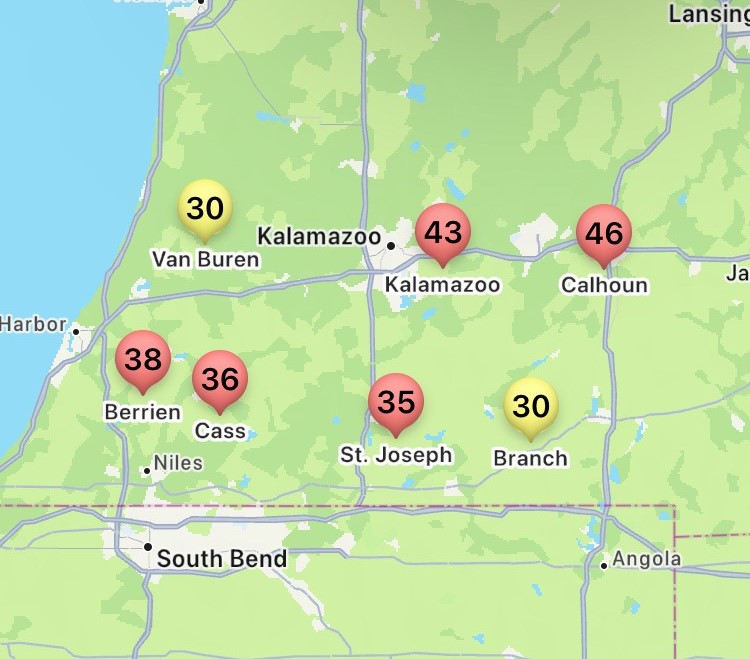
Potatoes continue with early harvest and vine kill for storage acres. The cool temperatures were good for bulking but also ideal for late blight development. The cases of late blight in St. Joseph County have been contained and appropriately cleaned up, but it is still important for scouting to continue and protective fungicides on fields where vine kill is not imminent.
Most acres of alfalfa and forages are on a third cutting with some even approaching a fourth cutting. The drier weather from this past week was good for cutting and baling.
Weekly water use
|
Estimated weekly crop water use for field crops in Michigan (in/week). |
||||
|---|---|---|---|---|
|
Crop |
Growth stage |
Constantine |
Entrican |
Hart |
|
Corn |
VT |
1.25 |
1.16 |
1.22 |
|
Silk, Blister, Dough, Begin dent |
1.25 |
1.16 |
1.22 |
|
|
Full dent |
1.14 |
1.06 |
1.11 |
|
|
Soybeans |
R2 Full bloom |
1.25 |
1.16 |
1.22 |
|
R3 and R4 Begin pod/Full pod |
1.25 |
1.16 |
1.22 |
|
|
R5 and R6 Begin seed/Full seed |
1.25 |
1.16 |
1.22 |
|
|
R7 Begin Mature |
1.14 |
1.06 |
1.11 |
|
Peak water use continues for both soybeans and corn, making it essential to optimize irrigation efficiency and productivity. Irrigators should aim to apply enough water to meet five to six days' worth of crop needs per irrigation application. This week, daily crop water use is estimated at 0.17 to 0.20 inches, however it may vary across regions, agronomic practices and soil. For soybeans affected by white mold, larger irrigation applications are recommended to reduce continuous canopy moisture. If your soybeans are nearing the R7 stage, water needs will decrease, and under Michigan's weather conditions, additional irrigation may not be necessary to reach R8 stage.
Keep an eye on crop water use, weather forecasts and leave room for potential rainfall. As corn advances to the full dent stage, reduced transpiring leaf area and lower solar radiation will significantly decrease water requirements, though irrigation might be necessary. It’s essential to continue monitoring soil moisture levels and water use until the crop reaches physiological maturity.
The table above presents estimated crop water use for various field crops across three locations in Michigan. This data helps irrigation management decisions by showcasing potential crop evapotranspiration, calculated based on reference evapotranspiration and crop coefficients for each crop growth stage. It is crucial to note that crop water use values vary across regions due to differences in weather conditions, growth stages, agronomic practices and soil properties.
When using these values for irrigation scheduling, be mindful that they assume all applied irrigation water will be utilized by the plants without any loss.
Additionally, these values do not account for any precipitation that may occur during the week of calculation. For more tools and information on irrigation scheduling tools, please refer to: Irrigation Scheduling Tools.
Reference evapotranspiration data was obtained from Enviroweather, which also offers a model for determining potential crop evapotranspiration. To access this tool, visit Enviroweather, click on "Crops," select your crop and use the potential evapotranspiration tool by choosing your nearest weather station, the latest date of interest and other crop information.
Field Crops Virtual Breakfast Series

A field crops nematode update, presented by MSU nematologist Marisol Quintanilla, was the topic for the MSU Extension Field Crops Virtual Breakfast this week. High carbon composts encourage nematode hatching while the “smelly” higher nitrogen manures kill nematodes. High carbon composts can be used to encourage hatching when a non-host crop will be planted, resulting in overall reduced nematode populations. Recordings of this and all the Virtual Breakfast meetings are closed-captioned and available at the Field Crops Virtual Breakfast webpage and the MSU Extension Field Crops Team social media platforms: Facebook, Spotify, YouTube, Apple Podcasts and Twitter.



 Print
Print Email
Email




